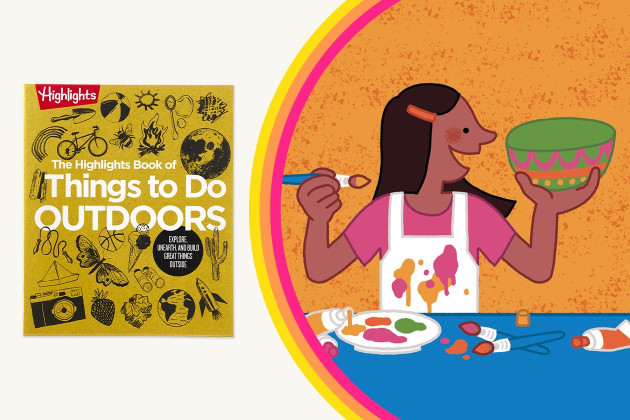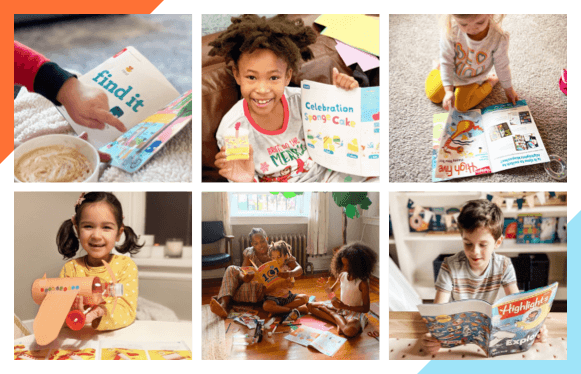How to Make Paper-Mache Bowls
By: Highlights Editorial
This activity from the Highlights Book of Things To Do Oudoors is an easy way to learn how to make a paper mache craft. Create paper bowls using newspaper and a “glue” you make yourself.
What You'll Need
What to Do
-
Set up a workspace outdoors—this activity is messy!
-
Take your small bowl and turn it upside down. Cover the bottom of it with plastic wrap.
-
Cut the newspaper into equal-sized strips. These should be about one inch thick and long enough to drape over the back of your small bowl from one side to the other.
-
In your mixing container, combine equal parts water and flour and mix them together. Try starting with one cup of each and adding more if you need it.
-
Dip a strip of newspaper into the mixture. Slide your fingers down the strip to remove any extra mixture, and then lay the strip across the bottom of the bowl.
-
Repeat step 5 with another strip, laying it so that it intersects with the first strip. Continue repeating this step, crisscrossing the strips until the bowl is completely covered by newspaper.
-
Use a paintbrush to coat the newspaper-covered bowl with another layer of the flour and water mixture.
-
If you want, add another layer of newspaper strips to the bowl. The more layers you add, the thicker and sturdier the bowl will be.
-
When you are finished, let the bowl dry overnight. Once it is dry, gently remove the small bowl from your paper mache bowl by pulling on the plastic wrap.
-
Using acrylic paints, decorate your bowl however you want. Make sure to let it dry completely between coats.
Fun Fact: The secret behind paper mache lies in molecules. Molecules are the small building blocks that make up substances— including water and flour, the substances used to make paper mache. Water molecules tend to easily “stick” with other molecules. When water is added to flour, the molecules in the mixture stick to themselves—and to other things. “Sticky” molecules are what make other glues work, too.
Did you love this project found on page 94 of The Highlights Book of Things to Do? The Highlights Book of Things to Do Outdoors is the essential book of curiosity, exploration and the great outdoors. Kids ages seven and up will









